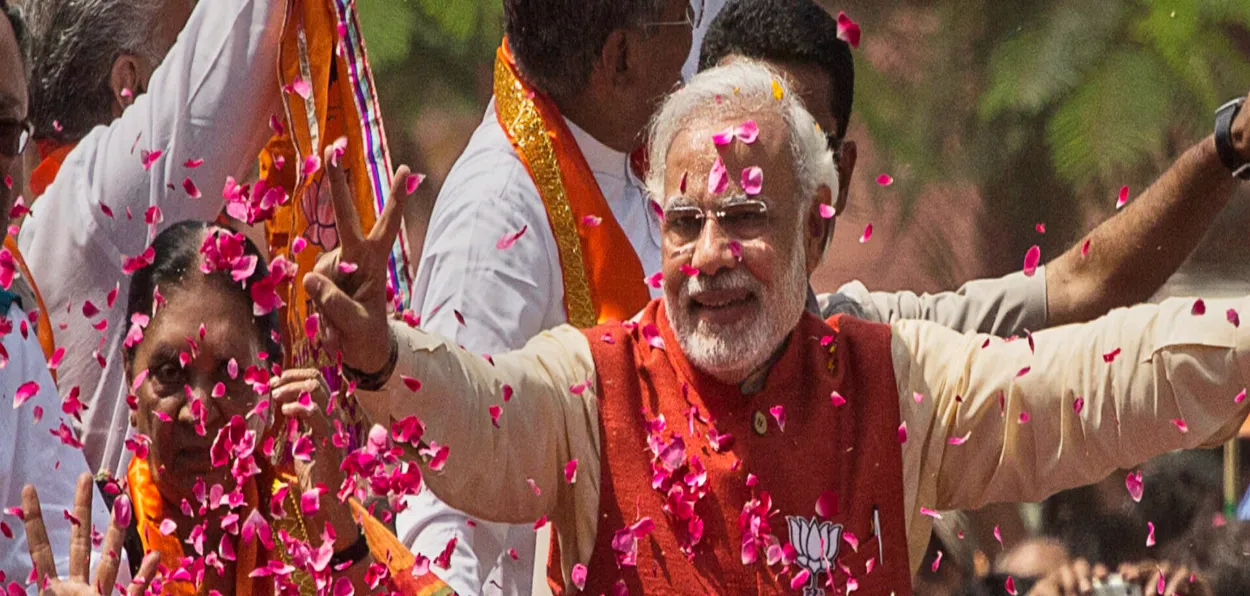
 Rajeev Narayan
Rajeev Narayan
South Asia’s political landscape resembles a furiously-revolving stage, with leaders getting ousted, systems overturned and crises erupting with clockwork regularity. India, often the reluctant anchor in this tempestuous theatre, finds itself balancing stability at home against chaos abroad. And hovering over it all is China—once adversary, now being firmly recast as formidable and returning partner.
Nepal remains the regional poster child for volatility. Once governed by feudal Ranas, then by a monarch who managed to discredit monarchy itself, the country has experimented with democracy in the way some experiment with diets… frequently, inconsistently and with mixed results. The latest coup, dressed up as a ‘rearrangement of furniture’, only reinforces the playground joke that Nepal changes Prime Ministers almost as often as its sports teams change captains.
Sri Lanka’s collapse was more operatic—queues for fuel, shortage of food and irate citizens storming presidential residences. Bangladesh, which once embodied the promise of steady development, now treads uneasily between progress and authoritarian drift. And Pakistan remains Pakistan, its political merry-go-round spinning so fast that predicting next week’s leader feels less like analysis and more like betting on the lottery.
Indian is the Saving Grace
Against this backdrop, India’s stability is quite remarkable. It is a noisy, plural democracy of 1.4 billion that is still managing sustained economic growth, visible digital transformation and an expanded role in global governance. No trivial feat. Yes, India has its own challenges, but when contrasted with the region’s upheavals, its steadiness shines all the brighter.
In sharp contrast is Nepal, which has been rewarded the dubious moniker of ‘Restless Republic’. To be sure, the nation has never had stability in long stretches. From the iron grip of the Ranas to the faltering hand of monarchs, from Maoist insurgency to endless constitutional reinvention, its politics has been a carousel of experiments, rarely delivering on loudly-announced promises. The recent coup, thus, only seems to confirm what Nepalis have come to accept—governments come and go with startling regularity.
This churn is not just politics. It has eroded public faith in institutions, stunted economic momentum and left Nepal oscillating between fragile democratic aspiration and weary resignation. Citizens are now accustomed to the turbulence, much as India is accustomed to power outages on hot summer evenings; irritating, predictable and reluctantly endured.
Nepal Worries, China Cheers
For India, Nepal’s fragility is more than simple curiosity. Geography, culture and history have bound the two nations for centuries, from open borders to shared rivers. Any instability in Kathmandu reverberates southward. Every reshuffle in Nepal’s political order is not just a domestic affair; it reshapes the very environment in which India must operate.
Stepping into this circle of worry and gloom is China. For years, Beijing has wielded cheque-book diplomacy, financing roads in Nepal, ports in Sri Lanka and energy projects in Pakistan. Every regime overhaul in India’s neighbourhood used to present China with an opportunity to expand its influence, sometimes at India’s expense. But the script is changing.
After years of barbed exchanges, border tensions and suspicion, Beijing and New Delhi are walking new ground. Trade talks have resumed, cultural exchanges are encouraged, and military hotlines have been reactivated. The two nations have realized that rivalry is an unaffordable indulgence when global power balances are shifting and economic headwinds are real.
This thaw is the result of a pragmatic reset. China still invests in South Asia’s infrastructure, but India increasingly seeks to complement, rather than contest, that footprint. The latter’s proposal to co-develop projects in Nepal and Sri Lanka with an emphasis on sustainability, digital connectivity and local capacity-building offers a contrast to Beijing’s hard-edged ‘Belt and Road’. Where China builds highways, India builds human capital—through scholarships, health partnerships, and disaster relief and technology transfers.
For small South Asian states, the message is clear. India doesn’t want vassals, only partners. That distinction, in a region long wary of ‘big brother’ attitude, is reshaping perceptions.
India’s Regional Overtures
In recent years, India has shown leadership without arrogance. During Sri Lanka’s crisis, India was the first to send over emergency supplies of medicine, fuel and food. In Nepal, India continues to fund schools, hospitals and cross-border infrastructure, while expanding electricity interconnections that allow surplus power to flow south. Bangladesh’s success in textiles and energy has been supported by Indian lines of credit and joint ventures. Even in Pakistan, where relations remain chilly, India’s provision of vaccines during the pandemic was noted, if not loudly acknowledged.
The efforts go beyond aid. They are about positioning India as a steady, reliable partner in a region where political chaos has become routine. When neighbours wobble, India steps in: not to dominate, but to steady the ground. This soft power complements hard economics. India’s trade with South Asia has risen, digital payments are crossing borders and cultural diplomacy (from film to yoga) continues to resonate. It is not the heavy hand of geopolitics, but the quiet pull of shared history and pragmatic cooperation.
India’s 3 Must-Haves
The above being said, India needs critical takeaways from the current churn. One, stability is an achievement that must be safeguarded, not assumed. India’s own democracy is robust but not immune to stress, and vigilance is its price. Two, regional leadership is not ornamental, but existential. India cannot rely on GDP numbers or space triumphs alone; it must constantly invest in neighbourhood stability. The measure of leadership is not how loudly it preaches, but how consistently it partners.
Three: renewed ties with China offer opportunities as well as challenges. By cooperating selectively on issues like climate, trade and infrastructure, India can help temper regional instability. A cold war mindset serves neither nation; calibrated coexistence will serve both.
Beyond the subcontinent, India faces other jolts. Washington’s decision to slap 50 percent tariffs on Indian exports is a wake-up call, one that shouts that distant allies can be fickle. Such moves underscore why cultivating resilient, cooperative neighbourhood ties is not an optional pursuit, but a strategic imperative.
Does India need to worry? Not really. Its democracy is robust, economy resilient and its strategic diplomacy is more agile than before. Yet, complacency could be dangerous. From Kathmandu to Colombo and Dhaka to Islamabad, South Asia remains a theatre in constant motion. India cannot script every act, but must remain engaged; firm, steady and respectful.
ALSO READ: Sushila Karki's challenges in restoring peace, democracy in Nepal
India needs to remember that when storms gather in the Himalayas, the winds rarely stop at the ridgeline. They sweep southward, carrying both risks and opportunities. It is in those shifting winds that India must continue to prove not just its resilience, but its leadership.
The writer is a veteran journalist and communications specialist. The views expressed are personal
